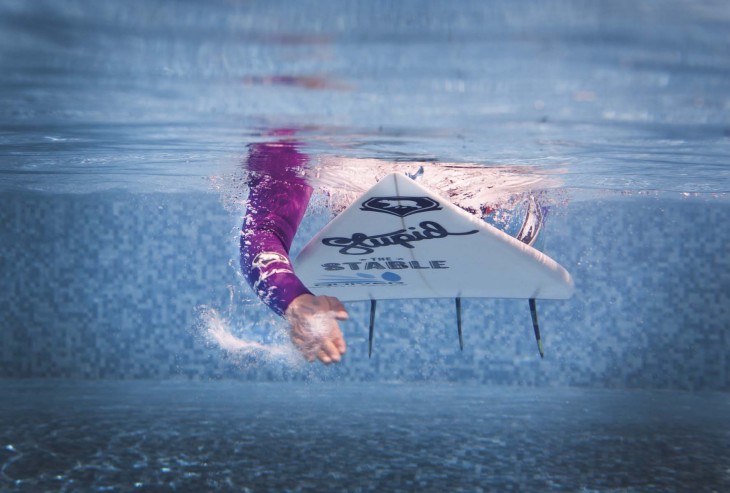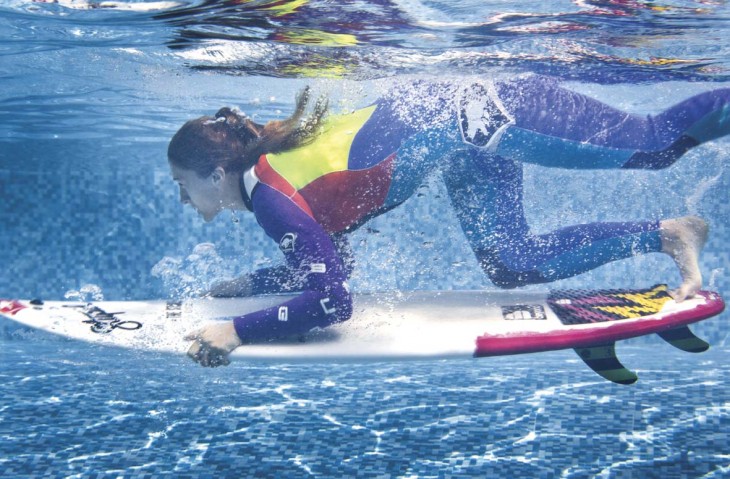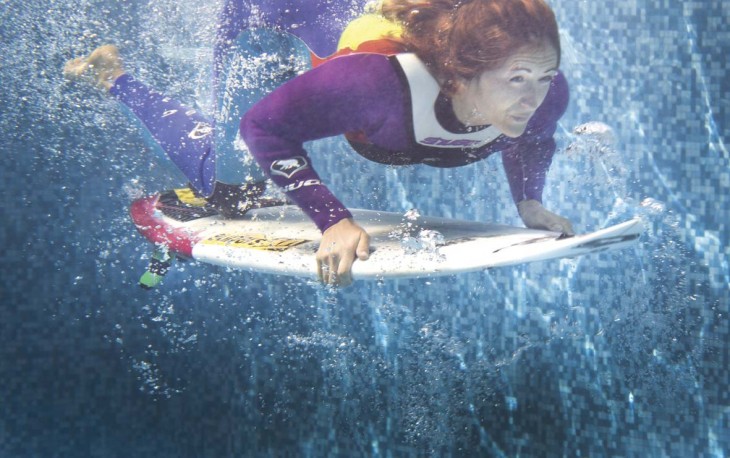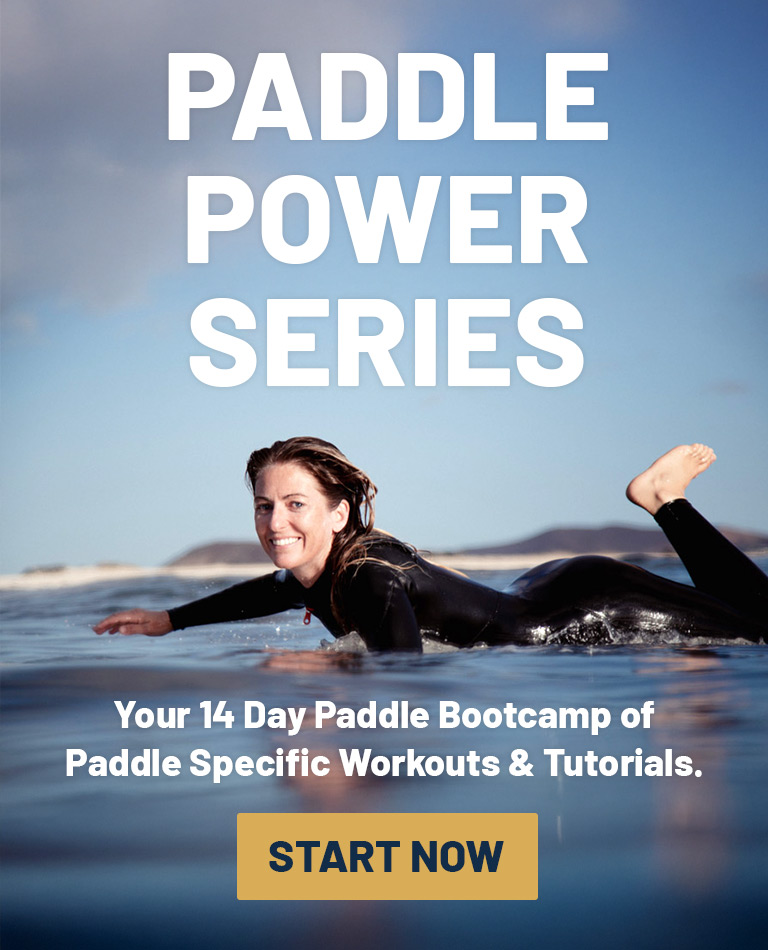Photos and words by Abbi Hughes
If you’re finding it hard to get out the back then it’s time to think about perfecting your technique. It is important to get your duck dive right to help you get out back to enjoy the surf with ease and grace.

Duck diving is quite a difficult manoeuvre to learn but we will start with the basics.
If you have ever ventured out in the waves for a swim and decide to dive beneath the broken waves, instead of taking a hit by the water, you will automatically duck deep beneath the wave, letting the white water pass over the top of your back and only coming up to the surface once the wave has passed. Well this is exactly what we will be doing with a duck dive, instead we are just taking our beloved board with us! A duck dive has the same pattern and process as when you are swimming. Dive before the wave hits and a swoop under the white water, come up as it passes. Easy right?
Well it is a little more complicated than that, its difficult to tell your board (using your body weight) to make this swooped motion under the wave. With confidence and practice it will become easier and it will feel more natural.
So to break this movement down:
1. Paddle hard towards the breaking wave, this will give you extra momentum to swoop beneath the wave.
2. The actual dive is all about timing. Make sure you don’t dive too early and get caught by the back of the wave, or dive too late and get taken out by the front of the white water. This takes practice to master the perfect time.
3. About a metre or two before the wave hits, place your arms beneath your shoulders (about 2ft from the nose on a short board) and push down on the rails of your board, submerging the front of your board into the water. Shift your weight slightly forward to help this motion.
4. Place your knee (whichever is more comfortable for you) on the deck of the board, to push the tail into the water, following the swoop of the nose. You can use your foot instead of your knee to get even deeper beneath the wave. Use your other leg to balance this manoeuvre, you can lift it into the air to dig the back of the board into the water and help swoop the nose back up to the surface when you bring your legs together again.

5. As the wave passes over head bring your body weight backwards and let the nose rise slowly. The tail will automatically stay submerged as the pressure of the wave falls over it.
6. The natural buoyancy of the board will pop you back to the surface within seconds, so try and attack this manoeuvre with a bit of force and speed.
You can practice duck diving in the flat or in small waves to begin with to help improve your technique.
Duck dives are usually used when surfing shorter boards. It’s very difficult to dive a beginners surfboard as they are purposefully shaped to be more buoyant. Some long boarders can duck dive their performance boards, however, don’t worry if your can’t duck dive your board. You can always try a turtle roll! See the technique pages of SurfGirl Mag for more information about improving your surfing techniques.
Buy your copy of the mag here….

With thanks to Jessie Tuckman.





Trackbacks/Pingbacks